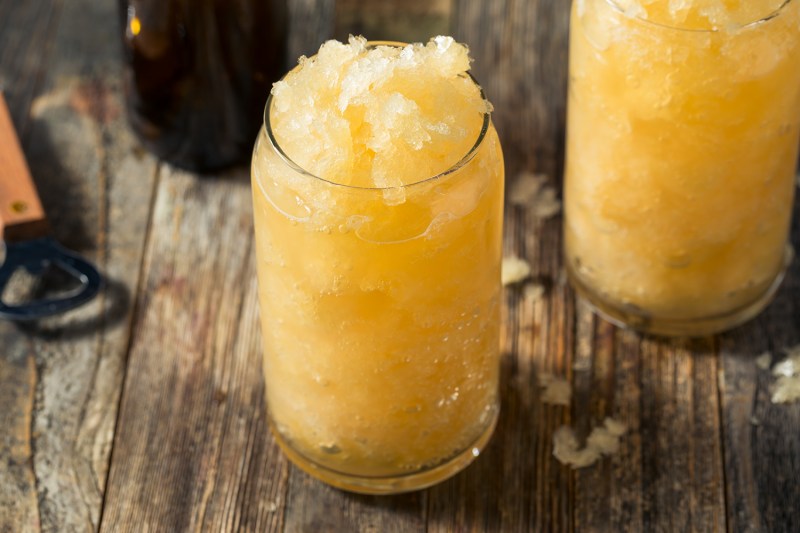
What’s better than an ice-cold beer? A beer made partially of ice, of course. Put on your best trunks and ready your coozies, it’s beer slushie season.
But before you simply combine a pint and some ice in a blender and push pulse, let’s discuss the optimal approach. After all, we’re not in the business of diluting a good beer simply in the name of coldness. There’s a method to this madness, and some context to boot.
Related Reading
While Americans have long sung the praises of ice-cold beer, the beer slushie was actually devised elsewhere. Exceptional culinary minds in Thailand brought the drink to life, the perfect complement for muggy weather and spicy cuisine. Also dubbed a jelly beer, these unbelievably cold brews benefit from a special container full of ice and salt. The beers are kept in motion by a subtle motor (so they don’t fully freeze) and when they’re cracked, they spill from the bottle at below 30 degrees with a slushie-like texture. Folks who have dined at places like Uncle Boons in NYC or Pok Pok (RIP) in Portland have likely witnessed and enjoyed such beers.
If you want to invest in a high-tech contraption that will make you a jelly beer, go for it. Yet, you can achieve just about the same quality through a pretty simple DIY method that requires very little extra gear or knowhow.
Start by selecting a lower-alcohol beer, like a lager or pilsner. A hop-bomb like an IPA can taste a bit off when frozen, as the green and bitter notes tend to skew some. Adding a bit of citrus (lemon or lime juice) and sweetness (simple syrup or a fruit liqueur of some kind) is recommended, as it can offset the dilution of the ice. You can also use grenadine or even some lemon lime soda.
The simplest way to pull this off is by creating the above mixture and pouring it into an ice tray or other freezable vessel. Freeze it, then blend. Don’t overdo it with your blending or you’ll end up back where you started, a fully liquid state. A lower setting at minimal increments is a good way to start. You can pause as you go to check in on the consistency.
Another method involves creating the slushie texture as you go. Freeze the mixture in a shallow container for about two hours, scraping it every thirty minutes to keep it from fully solidifying. In the end, you’ll have a Slurpee-like serving of beer, ideal for hot weather happy hour.
Throw a pint glass or two in the freezer beforehand, as a chilled vessel works best (preferably one with a handle to create some distance between the drink and your relatively warm hand). A spoon is great for scooping but the best way to enjoy a beer slushie is through a stainless steel straw. There’s hardly a more playful way to drink a beer.
And for the diehard IPA heads out there, it can be done. You’ll just need a little extra juice or fresh fruit to round out the hops. Go with something substantial like a double


